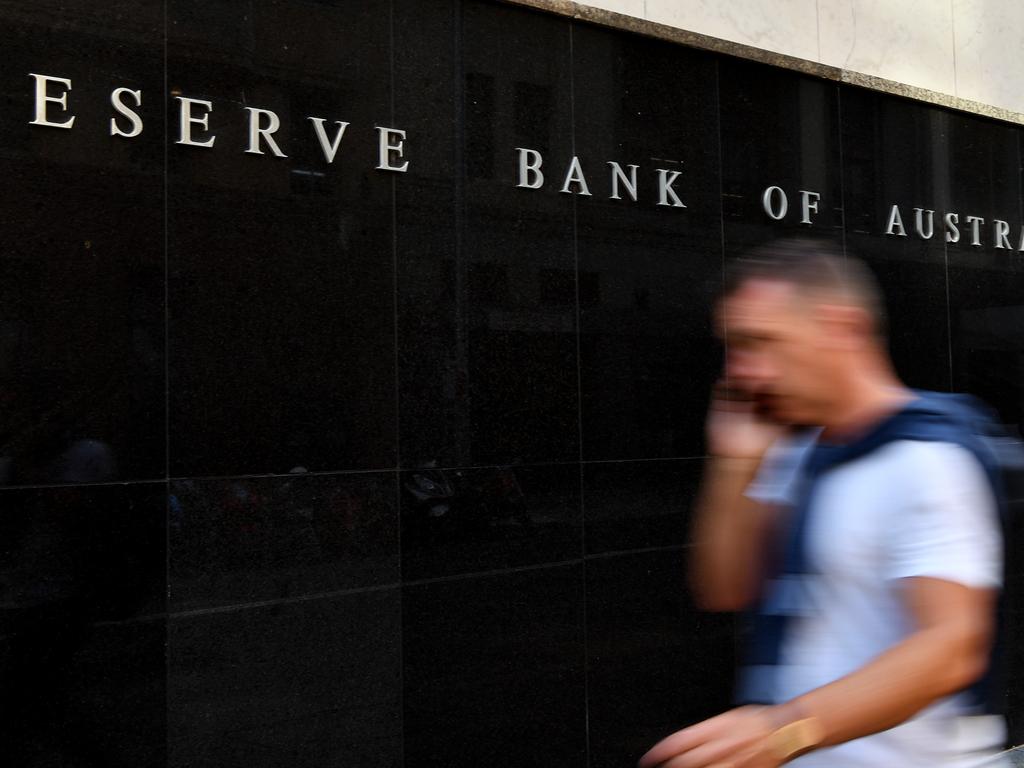Westpac building a buffer

At 10.8 per cent, the bank’s common equity tier one capital ratio sneaks into the prudential regulator’s unquestionably strong ballpark of 10.5 per cent-plus, but you’d hardly describe the buffer as luxurious.
What’s more, the board inflated the CET1 ratio by relying on a measure it would have preferred to keep in its kit bag — cancellation of the interim dividend.
The move, foreshadowed by The Australian, is possibly unprecedented for the 203-year-old bank, which continued to make shareholder distributions through its near-death experience in the early 1990s recession and in the financial crisis in 2008.
It triggered speculation on Tuesday that Westpac might even scrap its final dividend later this year if the worst-case COVID-19 economic scenario comes to pass.
As one analyst commented: “If you’re going to have a bad year, you might as well have a really bad one.”
In Westpac’s favour was its conservative approach in the third quarter to risk-weighted assets, which is the denominator in the CET1 calculation.
While the bank generated 29 basis points of internal capital from cash earnings, this was almost entirely offset by growth in RWAs due to higher customer-risk classifications and a $7bn overlay for corporate, business and specialised lending.
Westpac is said to be ahead of its rivals in the process of allocating higher risk-weightings because of the COVID-19 hit to the economy.
Chief executive Peter King said he was “really pleased” with Westpac’s balance-sheet strength, with the 10.8 per cent CET1 ratio little changed from March despite the increasing stress in the credit portfolio and the $7bn overlay.
But in a Q&A session, it was put to him that the ratio could quite easily fall to 10.5 per cent if there were some writedowns and Westpac settled the anti-money laundering case brought against it by Austrac at the regulator’s asking price of $1.5bn instead of the bank’s $900 provision.
Not only that, but the ratio could fall further to 8.5 per cent or thereabouts if the economy tanked.
While the Australian Prudential Regulation Authority has made it clear that the banks are expected to run down their capital conservation buffers, which are generally equal to 2.5 per cent of RWAs, the point was that Westpac would be better placed to go into the crisis with more capital rather than less.
This was especially so because the market ultimately would have to fund Westpac’s CET1 rebuild.
“I get the question, I get the sensitivity, but we’ve just got to work on generating capital internally, making the right decisions,” King said in response. “But I’m prepared to use the buffer. If it’s an outcome like you say, we should expect to use the buffer.”
There’s an understandable reluctance to raise capital as the cycle worsens. Also, the last thing Westpac would want to do is fill its coffers just as Austrac is extending its hand for more.
Forbear and beware
A lot is riding on the practice of deferring loans in the coronavirus pandemic — about $275bn in home and business lending, at last count.
Amid widespread lay-offs, it made sense for the banks to wait out a period of great uncertainty — and the impact of unprecedented support measures such as JobKeeper and JobSeeker — before taking enforcement action against borrowers. But what if the intuitive benefits of so-called forbearance are not borne out in practice, at least from the lender’s perspective?
A recent International Monetary Fund study of the experience of Irish banks in the financial crisis found that keeping otherwise non-performing loans alive had a range of complications.
The authors said their findings should make policymakers aware of the potential risks of forbearance in any recovery from COVID-19
The practice was defined as restructuring loans to interest-only, which ensured there was no change in the amount owed; extension of loans by increasing the total limit or pushing back the due date, or lowering the interest rate.
Using supervisory-level data on corporate loans, the study found that banks with high levels of non-performing loans relative to their capital and provisions were more likely to grant forbearance measures to the riskiest group of borrowers.
Risky borrowers were also more likely to get an increase in the overall limit or the maturity of a loan from a distressed lender.
But, importantly, there was no forbearance measure that significantly reduced the probability of default in the long term.
Also, where banks prevented a default by granting concessions to troubled borrowers, it was often a substitute for new lending.
Terms such as zombie lending have often been used to describe the practice of making concessions to companies that effectively are on their death beds.
The IMF found this could be economically useful under some circumstances, but also could be used by banks to conceal losses.
This could lead to systemic risk by increasing uncertainty about the quality of banks’ assets and undermining trust in the banking sector’s solvency.
While the report says it is too early to analyse the effectiveness of forbearance in the COVID-19 pandemic, the implementation of broad-based measures to help companies through the liquidity shortage is justified.
“However, as disentangling illiquidity from insolvency becomes easier, our findings may help policymakers to shape a more targeted approach in later phases of the crisis,” the authors say.
gluyasr@theaustralian.com.au
Twitter: @Gluyasr







Capital isn’t everything in a crisis but it counts for a lot, which is one of the reasons Westpac’s third-quarter trading update didn’t exactly set the market alight.